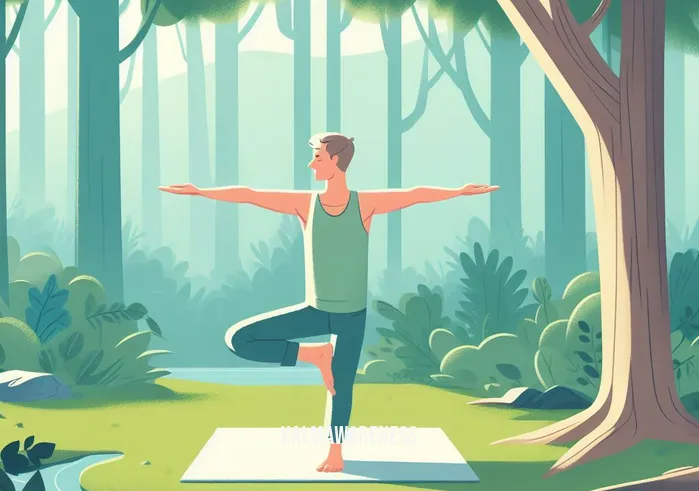The Power of Call to Calm Meditation: Your Gateway to Serenity and Mindfulness
In a world that constantly bombards us with stimuli—from smartphones and laptops to 24/7 news cycles—it’s easy to feel overwhelmed. Stress, anxiety, and exhaustion become common companions, chipping away at our peace and serenity. Yet, amidst this chaos, there is an oasis we can all access: the transformative practice of call to calm meditation. This holistic approach integrates aspects of serenity, relaxation, mindfulness, peace, and tranquility into one comprehensive practice that anyone can incorporate into their daily life.
The Basic Elements of Call to Calm Meditation
Call to calm meditation isn’t just a trend; it’s a tradition steeped in ancient wisdom that has seen a resurgence due to its effective, evidence-based techniques. This practice is founded on the philosophy that a peaceful mind can lead to a balanced life. It includes a variety of techniques aimed at enhancing physical, emotional, and mental well-being. Some popular elements include breathing exercises, sensory awareness, and mindful hypnobirthing, which have all been proven to contribute to a state of relaxation and tranquility.
Breathing: The Core Component
Breathing is not just a biological function; it’s a gateway to peace and relaxation. In call to calm meditation, breathing serves as a focal point to clear your energy and stabilize your emotional state. The practice encourages various techniques, like diaphragmatic breathing and controlled exhalations, to deepen the meditative state.
“Breath is the bridge which connects life to consciousness, which unites your body to your thoughts.” – Thich Nhat Hanh
Mindfulness: A State of Presence
Mindfulness, another key aspect of call to calm meditation, entails being fully aware and present in the moment. This practice is not just about emptying the mind but about filling it with an awareness of the ‘here and now.’ Mindfulness involves attaining a peaceful state of mind, devoid of worry and external distractions.
To enhance mindfulness, you can:
- Use guided imagery
- Repeat affirmations
- Practice mindful movement exercises to improve sleep
- Engage in EMDR meditation for emotional stability
The Flexibility of Practice
One of the benefits of call to calm meditation is its flexibility. It can be practiced in various positions and settings, tailored to your comfort and needs. You can even meditate while lying down, which offers the additional benefit of physical relaxation.
Additional Techniques for Deepening Your Practice
Call to calm meditation is not a rigid set of practices but an evolving discipline. Apart from breathing and mindfulness, it can also incorporate other approaches like:
- Rouse yoga for body flexibility and awareness
- 256 Hz sound frequencies for additional benefits
Unveiling the Wisdom
As you delve into the world of call to calm meditation, it’s crucial to embrace the judgment of the wise—which in this context means understanding that meditation is a lifelong practice. It’s not a quick fix but a sustainable path to self-care, a journey to understanding how our minds and bodies can work in harmony.
As we move forward, you’ll learn more about incorporating call to calm meditation into your daily routine, making it a simple yet profound practice. The next segment will dive deeper into these techniques, helping you understand how to integrate them effectively. If you’re eager to take a step closer to a life filled with serenity, continue reading.

Elevating Your Well-Being with Advanced Call to Calm Meditation Techniques
Having introduced the transformative power of call to calm meditation and its foundational elements, it’s time to elevate your practice by diving deeper into advanced techniques and practices. Call to calm meditation is not just a way to find serenity or peace; it’s a comprehensive system designed to integrate seamlessly into various aspects of life, including physical wellness, emotional stability, and mental clarity.
The Synergy of Call to Calm Meditation and Physical Activity
One unique aspect of this practice is its ability to blend with physical activities, thereby creating a holistic experience that encompasses both mind and body. For instance, you can combine meditation with walking, specifically aimed at teenagers to create a balanced, effective routine that maximizes focus and reduces stress. Physical activity in synergy with call to calm meditation can produce remarkable benefits.
Strategies to Integrate Physical Exercise:
- Walking meditation
- Rouse Yoga
- Mindful stretching
The Psychological Advantages of Call to Calm Meditation
Beyond physical wellness, call to calm meditation offers significant psychological benefits. Stress reduction, better concentration, and emotional resilience are just a few. One method that has gained attention is EMDR meditation, which focuses on emotional healing and trauma recovery.
Psychological Benefits:
- Stress reduction
- Enhanced emotional regulation
- Improved focus and concentration
The Multifaceted Applications: A Comparative Table
To get a clear idea of how call to calm meditation works in various scenarios, here’s a table that outlines its applications in different settings:
| Setting | Benefit | Related Technique |
|---|---|---|
| Home | Reduced Stress | Breathing exercises |
| Work | Improved Focus | Mindful movements |
| School | Enhanced Learning | Mindfulness |
| Outdoor Activities | Emotional Stability | Walking Meditation |
| Emotional Healing | Trauma Recovery | EMDR Meditation |
This table serves as a handy reference to understand where you can embed this practice in your daily life.
The Inner Alchemy: Unlocking Emotional Resilience
Call to calm meditation is more than a relaxation tool; it’s an alchemical process that transforms emotional vulnerabilities into strengths. The wisdom behind this alchemy is not a judgment but an understanding of how our emotional state interacts with our thought processes.
Emotional Resilience Building Blocks:
- Acknowledge emotional triggers.
- Employ mindful movements for emotional release.
- Apply EMDR techniques for healing.
The Next Steps: Incorporating These Techniques into Your Routine
If you’re pondering about what the phrase “pretty soon” means in the context of experiencing the benefits of call to calm meditation, rest assured that with consistent practice, positive changes will manifest in your life sooner than you might expect. The key to making these techniques work for you lies in consistency and mindful practice.
Conclusion: Preparing for the Next Chapter of Your Journey
We’ve delved deep into the nuances of call to calm meditation, covering its advanced techniques and multifaceted applications. But there’s more to explore and integrate. In the next segment, we will explore some of the groundbreaking scientific studies that validate the efficacy of call to calm meditation. We’ll also examine how to maintain this practice as a sustainable form of self-care, ensuring that your path to serenity is not a fleeting moment but a lifelong journey. Eager to find out more? Continue reading to unlock the full potential of this transformative practice.

The Beacon of Hope in Call to Calm Meditation
In our journey through the multifaceted world of call to calm meditation, we’ve covered its fundamental techniques and dived into its advanced practices. Now let’s explore the element that adds the touch of magic to any transformative process—hope and inspiration. Finding solace, tranquility, and peace of mind are key motivations behind any mindfulness practice, and call to calm meditation serves as the beacon illuminating this path.
The Resonance of Frequency: The Untapped Power of Sound
You might have heard of the power of sound in meditation but never fully understood its profound implications. The practice of call to calm meditation can deeply benefit from the use of specific sound frequencies, such as the 256 Hz. These vibrations align with your energy centers, paving the way for an inspired state of being.
“The earth has music for those who listen.” —George Santayana
Sound Meditation: An Overview
- Aligns energy centers
- Enhances focus
- Aids in clearing energy meditation
Mindfulness, Hope, and the Power of Now
The present moment is the only moment over which we have control, and mindfulness teaches us to inhabit this space fully. A peaceful state of mind in which thoughts are not occupied by worry fosters a climate where inspiration thrives.
“Do not dwell in the past, do not dream of the future, concentrate the mind on the present moment.” —Buddha
Techniques to Be Present:
- Observing breath
- Body scan meditation
- Mindful hypnobirthing for expectant mothers
The Inspirational Underpinnings of Different Meditation Styles
Understanding that meditation is not a one-size-fits-all tool opens up a realm of possibilities. For beginners who find traditional methods intimidating, Jack Kornfield’s meditation styles offer an accessible entry point into this rewarding practice.
“You, yourself, as much as anybody in the entire universe, deserve your love and affection.” —Sharon Salzberg
Other Forms of Meditation:
- Element of some meditation exercises focusing on external objects
- Can you meditate lying down? Of course, and here’s how.
- Meditation made simple for those overwhelmed by complexity
Unearthing the Wellspring of Inner Peace
The final touch in our exploration of hope and inspiration within call to calm meditation rests in one critical realization: Inner peace is not something we find; it’s something we create.
“Peace comes from within. Do not seek it without.” —Buddha
Strategies for Internal Peace:
- Avoid judgment; rather, aim to cultivate the wisdom of understanding.
- Be peaceful by integrating serenity into daily routines.
- Employ sustainable self-care practices.
Preparing for Your Next Journey in Call to Calm Meditation
We have journeyed through the labyrinth of hope and inspiration that resides within the domain of call to calm meditation. As we prepare to turn the page to our next chapter, anticipate diving into the empirical evidence that supports these age-old practices. We’ll uncover studies that unveil how remarkably effective this form of mindfulness can be for your mental, emotional, and physical well-being.
Eager to unearth the science behind these ancient practices? Continue reading, and unlock a realm of evidence-based inspiration that makes call to calm meditation not just an art, but a science.

Demystifying the Art of Call to Calm Meditation
The path to tranquility and mindfulness through call to calm meditation is not only a rich tapestry of practices but also a robust framework grounded in verifiable science. As we’ve discovered, this form of meditation is both an art and a discipline that has evolved over time, offering a plethora of benefits from emotional stability to peace of mind. Let’s dissect this intricate practice, breaking it down into comprehensible segments that are easy to integrate into your daily life.
Core Elements of Call to Calm Meditation
The practice of call to calm meditation can often seem overwhelming, given the broad scope of its techniques and methodologies. To better understand its structure, let’s break down its core components.
- Breathing Techniques: The cornerstone of any meditation practice, breathing exercises form the backbone of achieving tranquility.
- Mindfulness: Going beyond breathing, the practice of being present is vital for attaining mental clarity.
- Mindful Movement for Sleep: How movement meditation can help you transition to a state of restful sleep.
- Sound Elements: As discussed, sound frequencies like 256 Hz can enhance the meditation experience.
Physiological Benefits: The Body’s Response
Engaging in call to calm meditation isn’t merely a mental exercise; it significantly affects the body. Let’s delve into these physiological changes:
- Reduced Stress: Through the activation of the parasympathetic nervous system.
- Increased Immunity: As a result of lower stress hormones.
- Enhanced Sleep Quality: A critical outcome of the aforementioned Mindful Movement for Sleep.
- Pain Management: Achieved by rerouting mental focus away from discomfort, a technique commonly used in EMDR Meditation.
Moving Beyond Stillness: The Role of Action
Call to calm meditation extends its reach into the realm of physical activities, reminding us that mindfulness is not only for moments of stillness.
- Walking Meditation: Primarily aimed at teenagers, this form helps them to bring mindfulness into everyday activities.
- Rouse Yoga: Incorporating yoga with meditation brings a balance of physical and mental well-being.
- Body Awareness: Techniques such as touching that body part in a meditative state to enhance physical and mental awareness.
The Language of Mindfulness: Terminology Unveiled
Understanding the lingo associated with call to calm meditation can demystify the practice. Here are some key terms to keep in mind:
- Stabilization: Learn how to spell it and what it means in the context of meditation.
- Pretty Soon Meaning: How the concept of time can shift in meditation.
The Final Chapter Awaits: The Spectrum of Call to Calm Meditation
Having dissected the intricate anatomy of call to calm meditation, we find ourselves on the precipice of completing this enlightening journey. The final chapter will bring it all together, answering lingering questions and setting you up for a lifetime of enriched meditative practice.
As we delve into the final chapter, prepare to connect the dots and arrive at a synthesized understanding of how call to calm meditation serves as a multifaceted tool for a balanced life, rooted in science and validated by thousands of years of human experience.
Are you ready to round out your comprehensive understanding of this transformative practice? Continue reading to explore the final revelations that await you.

The Last Milestone: Refining Your Path to Serenity with Call to Calm Meditation
As we draw the curtains on our exploratory journey into the realm of call to calm meditation, it’s time to take a step back and reflect. It’s been an enriching voyage, to say the least, one that began with curiosity and now ends with a deep sense of understanding, peacefulness, and a toolkit for sustainable self-care.
Lessons from Our Odyssey
From understanding the physiological benefits to diving deep into actionable techniques such as Mindful Hypnobirthing, our voyage has been as enlightening as it was practical. We’ve discovered how this form of meditation involves attaining a peaceful state of mind and laid out the foundational steps to integrate these practices into daily life.
Exploring New Horizons
Moving forward, we can extend this meditation technique into a myriad of scenarios. Have you ever thought about the possibility of meditating lying down? Yes, it’s not only possible, but some techniques actively encourage it as a method for deeper relaxation. If you’re curious to learn more, you might want to explore can u meditate lying down?.
Nuggets of Wisdom
Jack Kornfield, an influential teacher in the realm of Western meditation, often says, “In the end, just three things matter: How well we have lived, how well we have loved, how well we have learned to let go.” Taking lessons from the meditation for beginners taught by Jack Kornfield, we have learned the importance of these facets in the context of call to calm meditation.
Stay Invigorated
While we’re concluding this particular chapter, it’s essential to recognize that the journey towards achieving serenity and tranquility is an ongoing one. You might find the element of some meditation exercises changing as you evolve in your practice. That’s okay. Keep an open heart, and you’ll find that the path keeps unveiling itself, offering an endless landscape of peace and mindfulness to explore.
Our Heartfelt Thanks
It has been an absolute joy sharing these insights with you. Your attention, curiosity, and zeal to learn are the very reasons these words flowed from ink to paper. The pursuit of peace, mindfulness, and serenity is a road that we are delighted to walk alongside you. Rest assured, our next edition will dive into other captivating topics. From clearing energy meditation to mastering the judgement of the wise, we have so much more to explore together.
Your Next Steps: A Gentle Nudge
If you feel inspired, take this as your sign to delve deeper into the treasure trove of content we offer. Feel like you need a refresher on any topic? You’re always welcome to revisit previous chapters for a more thorough understanding. Your journey towards tranquility and inner peace is too important to leave to happenstance, so why not consider it a part of your sustainable self-care routine?
Thank you for entrusting us with your time and attention. Keep an eye out for our next edition, where we promise to keep the insights flowing, enriching your path to a tranquil life. Until then, may you be peaceful, may you be well, and may you continue to find inspiration in every mindful breath you take.





